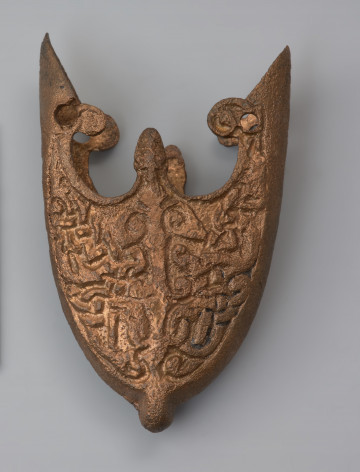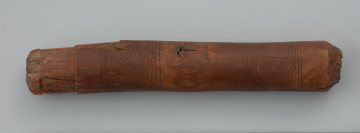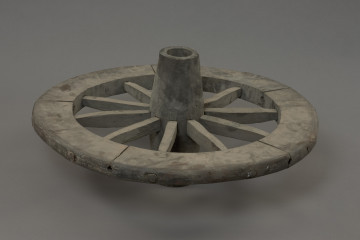
Type VI sword scabbard viscus (so-called Gotland group)
1176 — 1200
National Museum in Szczecin
Part of the collection: Middle Ages
Changes in the appearance of early medieval wooden spoons were very slow. According to individual tastes and needs, they are objects made from freely available material, possibly even waste. The handles of spoons were either straight or bent upwards considerably in relation to the bowls. The handles were usually round or oval in cross-section, but specimens with flat handles are also known. Only a few specimens were decorated with simple geometric motifs carved on the surface of the handle or by profiling the end itself. Bowls of spoons were usually completely flat or very shallow. They were given an oval or, more rarely, a circular shape. Changes in the appearance of spoons over time were not only due to their function but were also influenced by fashion and culinary tastes (solid, liquid and semi-liquid foods). In general, spoons with flat nibs used to eat solid dishes in the 13th century were replaced with deep nibs intended to eat soups. Dendrological studies of wooden spoons provided interesting data. They were made from species of trees and bushes found in abundance in the vicinity, including yew wood, which contains highly poisonous toxins and ephedrines.
Anna Bogumiła Kowalska
Author / creator
Dimensions
cały obiekt: height: 13.2 cm, width: 3.6 cm
Object type
spoon
Material
wood
Owner
Muzeum Narodowe w Szczecinie
Identification number
Location / status

1176 — 1200
National Museum in Szczecin

900 — 1100
National Museum in Szczecin

National Museum in Szczecin
DISCOVER this TOPIC
National Museum in Lublin
DISCOVER this PATH
Educational path